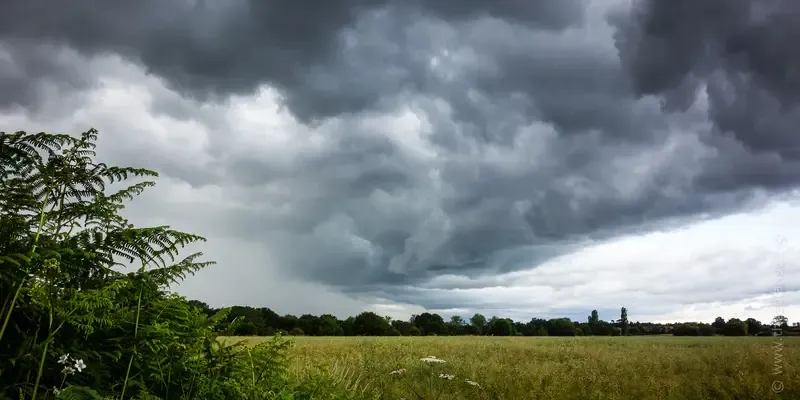A Hard Rain's a-Gonna Fall

As I slurped my second - desperately needed - coffee on Wednesday morning I watched a covey of partridge percolate out of the field margin and delicately pick their way through the neatly drilled, shoulder-high rows of winter wheat {{1}}. The field slopes away gently to the East and, although the partridge were blissfully unaware of it, was the site of major excavations through August and September as several hundred metres of drainage pipes were installed.
The drainage and the partridge reminded me that, although things appear timelessly bucolic, the environment is never static as new challenges (or threats) to the status quo are introduced by humans.
The partridge? These are Red-legged partridge (Alectoris rufa), a non-native species, released in their millions every year for shooting. I've not lived in this area long-enough, but in Fife their numbers always plummeted overwinter (and not just through 'lead poisoning') and they rarely bred {{2}}. But in November the fields and hedgerows are thick with them as they busily eat insects and seeds that would normally be fattening up the native finches for the long winter ahead.
This area contains a mix of good arable and pastoral land and has been intensively farmed for hundreds of years. The field with the partridge has probably had a succession of wheat, barley and - more recently - oil seed rape (OSR) grown in it for generations, yet it is only now that the farmer has installed additional drainage.
Perhaps the newly-drained region has always been boggy?
Alternatively, perhaps our changing climate - warmer, wetter winters and hotter, drier summers - explains the need for additional drainage.
There are interesting parallels between the introduced partridges and our (also non-native) honey bees; both compete for natural resources, sometimes to the detriment of the 'local' native species, and both may introduce - or aid the spread of - novel diseases (Millán, 2009).
However, this week I'm going to introduce (as there will inevitably be more on the topic than I can cover in 2-3k words) the impact of climate change on beekeeping.